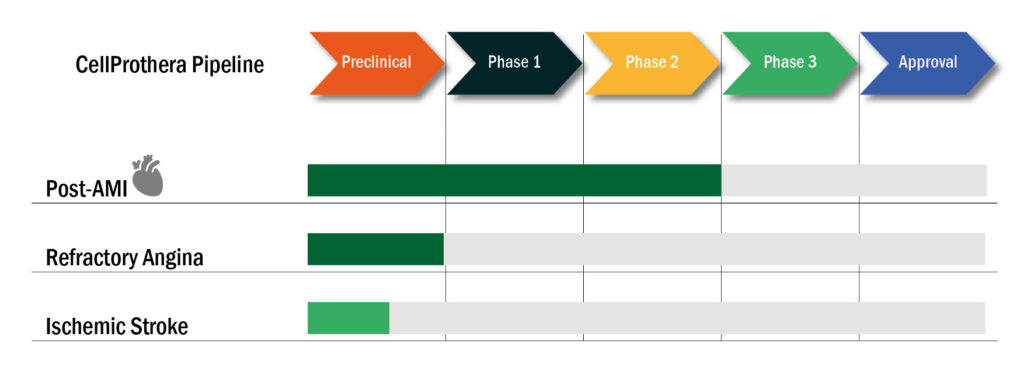

Stroke is a cerebrovascular disease with high rates of fatality. Tissue Plasminogen Activator, the only approved treatment is available for only 5-10% of patients.Together with our academic partner in USA – the University of South Florida, we are exploring the potential of CD34+ stem cells in acute ischemic stroke, and have already obtained promising preclinical data.
Refractory angina is caused by diffuse vascular disease.
It cannot be controlled by a combination of maximal medical therapy, bypass surgery, or percutaneous intervention.
MEDICAL NEED
Refractory angina (RFA) is chronic chest pain due to furring up of the blood supply to the heart that causes unbearable symptoms and poor quality of life despite current medical treatment, angioplasty, or bypass surgery. New cases are estimated at 75 000 in the US, 30 000- 50 000 in Europe and just under 20 000 in the UK. These patients pose significant healthcare costs as presentations are treated as suspected heart attacks with overnight admissions and frequent hospitalisations. Despite the availability of different treatments for coronary artery disease, RFA patients have limited treatment options as their disease cannot be treated with conventional treatment methods.
RATIONALE FOR CD34+ stem cells
